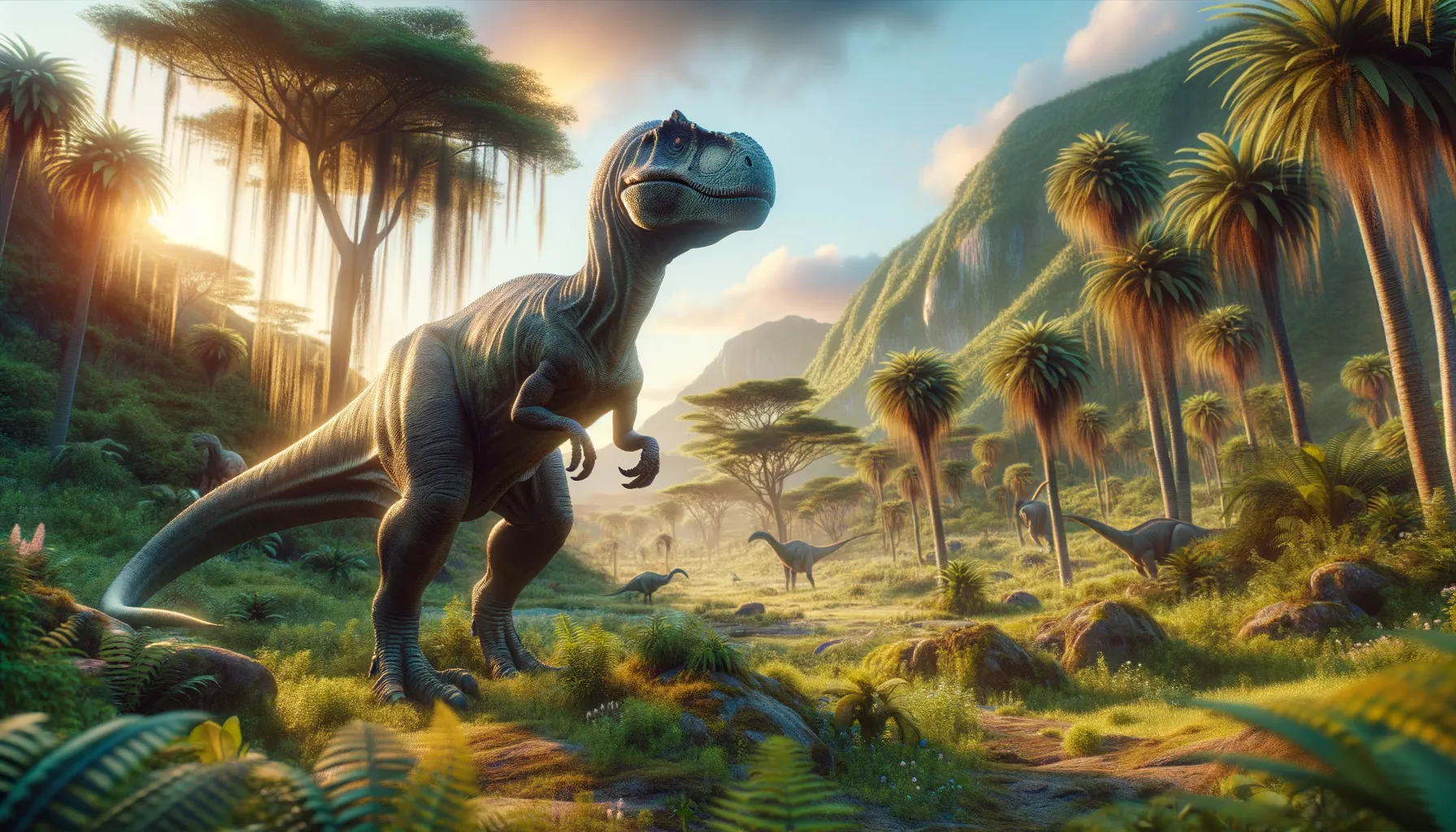
Pisanosaurus
Explore the dawn of dinosaur history.
Period
Triassic
Length
Roughly 3 feet long.
Height
Approximately 1 foot tall.
Weight
Around 10 pounds.
Pisanosaurus is one of the earliest known ornithischian dinosaurs, existing around 228 million years ago. This small, bipedal herbivore roamed South America, contributing to our understanding of dinosaur evolution. Its discovery marks a significant point in the study of dinosaur lineage, giving insights into early dinosaur development and diversification.
Diet
Pisanosaurus was a herbivore, primarily feeding on low-lying vegetation. Its diet consisted of plants, ferns, and possibly small shrubs, using its beak-like mouth to gather food.
Hunting
As a herbivore, Pisanosaurus did not hunt other animals. Instead, it foraged for food, using its small, agile body to navigate dense plant life and avoid predators.
Environmental challenges
Pisanosaurus lived in a time of significant environmental change, transitioning from a dry to a wetter climate. This shift affected the availability of its primary food sources, leading to adaptations in its foraging strategies. Predators also posed a constant challenge, necessitating a reliance on speed and agility for survival. Its small size made it vulnerable, requiring efficient use of cover and vegetation for protection.
Speed
Relatively slow due to its small size.
Lifespan
Estimated around 10 to 20 years.
First discovery
Discovered in Argentina in 1967.
Fun Facts
- Pisanosaurus is one of the earliest known ornithischian dinosaurs, which is a group of plant-eating dinosaurs.
- It lived during the late Triassic period, about 228 million years ago, in what is now Argentina.
- Pisanosaurus was named in honor of Argentine paleontologist Juan A. Pisano.
- It was a small dinosaur, estimated to be about 3 feet long, roughly the size of a domestic cat.
- Unlike the more well-known dinosaurs, Pisanosaurus did not have any horns or spikes and walked on two legs.
- Although its exact diet is unknown, it is believed to have been a herbivore, feeding on plants.
- Pisanosaurus fossils are rare, with only a few partial remains discovered so far.
Growth and Development
Pisanosaurus likely experienced rapid growth to reach maturity quickly, a common trait among small dinosaurs. Its development involved changes in limb structure for efficient bipedal movement. The growth pattern provided insights into the evolutionary trajectory of early ornithischians, showcasing adaptability in changing environmental conditions.
Habitat
Pisanosaurus inhabited the early Triassic landscapes of present-day Argentina, characterized by lush forests and abundant vegetation. This environment provided ample food resources and natural shelter from predators. Its habitat extended to plains and open areas, facilitating diverse foraging opportunities.
Interaction with other species
Pisanosaurus coexisted with various early dinosaur species and other contemporary reptiles. Evidence suggests it may have engaged in competitive interactions for food with similar-sized herbivores. Its presence in diverse faunal communities indicates a complex ecosystem with interdependent relationships.
Natural lifespan
Its natural lifespan ranged from 10 to 20 years.
Reproduction
Pisanosaurus likely reproduced through egg-laying, a common trait among early dinosaurs. Nesting behavior remains speculative, but it probably involved simple nests on the ground. Parental care patterns are not well-documented, yet it might have shared common strategies with later ornithischians.
Social behaviour
While specific social behaviors are not thoroughly documented, Pisanosaurus may have exhibited some level of social interaction, potentially forming small groups for foraging. These social structures could aid in protection against predators and facilitate resource sharing.
Fossil locations
Fossils of Pisanosaurus have been predominantly found in the Ischigualasto Formation in Argentina. This region is notable for yielding a rich diversity of early dinosaur specimens, providing critical insights into the dawn of dinosaur evolution. The Ischigualasto Formation offers a glimpse into the Triassic ecosystem, showcasing various faunal assemblages.
